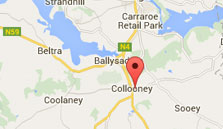Manual Handling Specific to Funeral Industry
This is a one-day course designed to equip learners with the knowledge, skills and competences to apply correct manual handling techniques in their workplace.
The training is for persons to whom the following definition applies “Manual handling of loads means any transporting or supporting of a load by one or more employees and includes lifting, putting down, pushing, pulling, carrying or moving a load, which, by reason of its characteristics or of unfavourable ergonomic conditions, involves risk, particularly of back injury, to employees”. (Safety, Health and Welfare at Work (General Applications) Regulations 2007, Regulation 68).
In addition the course will provide a structured development experience combining theoretical knowledge with practical skills application.
Course Entry Requirements
There are no formal educational requirements, however, those who have been advised by a doctor or suffer from back pain should advise DCA prior to attendance. In addition, where possible, clothing should reflect the participants work, provided it is loose fitting.
Learner Resources
Each delegate will receive a specially designed workbook that will help them apply their learning’s from the course to the job. This workbook will also provide with them the opportunity for reflection on their roles.
Certification
A Manual Handling’ Certificate will be awarded to all those who attend the course and successfully complete the assessments.
Course Outline
Unit 1: Legislative requirements and health benefits
1.1 Explain the main components of the relevant health and safety legislation and guidance documents
1.2 Evaluate the health and organisational benefits of an integrated approach to the management of manual handling
Unit 2: Anatomy and back care
2.1 Define the main components of the spinal column
2.2 Explain the main risk factors for back injuries related to manual handling
2.3 Describe current concepts of back care
Unit 3: Ergonomic principles and risk assessment
3.1 Describe the concepts of ergonomics
3.2 Explain the manual handling risk assessment process
3.3 Describe a range of controls to avoid and reduce the risk of injuries
Unit 4: Manual handling principles and techniques
4.1 Apply the main principles of manual handling to a range of manual handling tasks
4.2 Carry out a range of appropriate manual handling techniques
4.3 Demonstrate the use of manual handling techniques
Assessments
1: Multi-Choice questionnaire (tick box) Assessment
2: Practical Demonstration – Lifting, carrying, putting down and stacking demonstrations
3: Practical Demonstration – Pushing and pulling
(Assessment results will be either (Pass or Referral)


